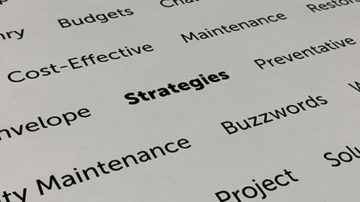I have a confession to make. When I started in the construction industry, I didn’t have a nice and tidy framework to guide me. Sure, I knew what the words … [Read more...] about Cost-Effective Preventive Maintenance
Archives for March 2019
When and How Often to do Exterior Property Inspections
We get some common questions when it comes to exterior property inspections. When should I do inspections? How often should I do inspections? … [Read more...] about When and How Often to do Exterior Property Inspections
7 C Strategies for Cost-Effective Maintenance
(St. Louis, MO, March 27, 2019) “Cost-effective”, “Preventative” and “Maintenance” are all common buzz-words used in the construction industry, and while the … [Read more...] about 7 C Strategies for Cost-Effective Maintenance
5 Ways to Tap into the Big-Time Power of Condition Ratings
To understand how cost-effective maintenance programs work, consider how you approach filling up your car with gas. When do you usually get gas? Do you … [Read more...] about 5 Ways to Tap into the Big-Time Power of Condition Ratings
Western Expands Roofing Business in Kansas City Area with Acquisition of Great Plains Roofing and Sheet Metal
Western Specialty Contractors has acquired the assets of full-service, commercial roofing and sheet metal contractor Great Plains Roofing and Sheet Metal of … [Read more...] about Western Expands Roofing Business in Kansas City Area with Acquisition of Great Plains Roofing and Sheet Metal
Roofing Roundtable: Critical Developments in the Roofing Industry You Need to Know About
Maintaining the roof on any building or facility can be an arduous task for any building owner or property manager. The roof, often the first line of … [Read more...] about Roofing Roundtable: Critical Developments in the Roofing Industry You Need to Know About






